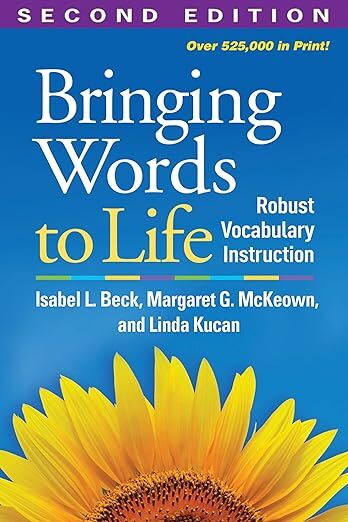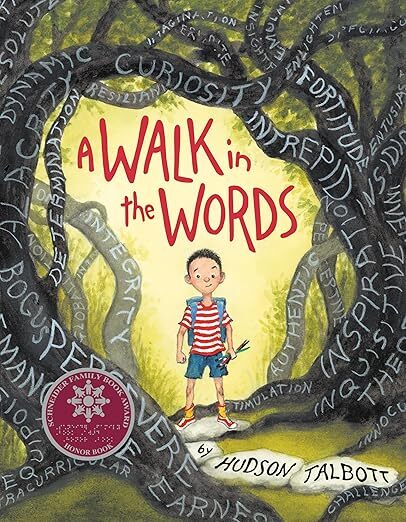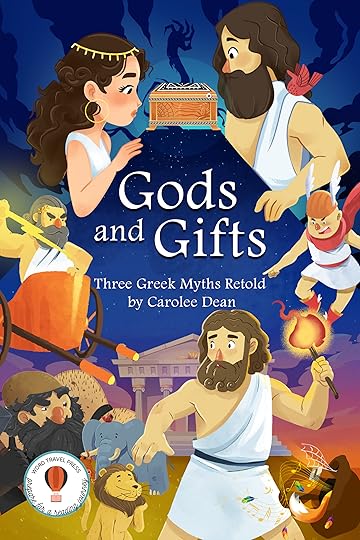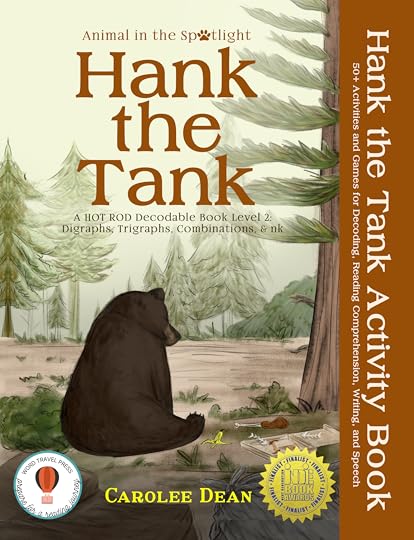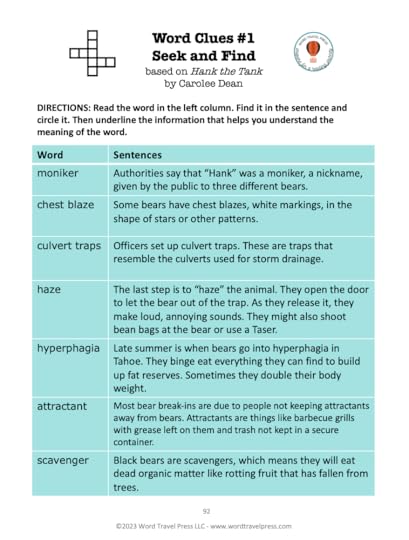Carolee Dean's Blog
November 19, 2025
Poe Poetry Spoofs and NCTE
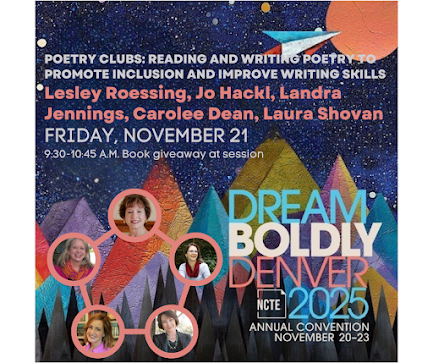
If you are at NCTE, check out my Friday morning poetry panel at 9:30 with Lesley Roessing, Jo Hackl, Landra Jennings, and Laura Shovan. We will be discussing using poetry clubs to promote writing skills. Below is a preview of one of my activities. It's from my decodable book, The Raven Remix: A Mashup of Poe Titles . Try creating your own Raven-inspired spoof.
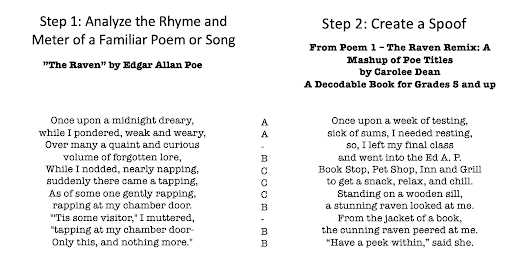
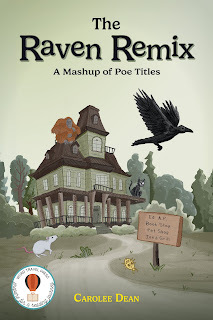
At 3:30 on Friday, I will have a session with Colorado and New Mexico Authors on "Threads of Possibility." Get details HERE.
Sign up for my newsletter HERE and receive a free copy of my first decodable book, No Gift for Man. Don't miss any of the fun-filled activities coming up.
November 14, 2025
COR - The Components of Reading and Writing - Part 7 - Creative Writing
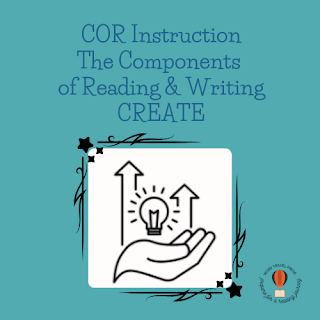
Through our COR (Components of Reading) series, we have spent this year focusing on the building blocks of both reading and writing, starting with phonological awareness, morphology, and vocabulary, and moving on to sentence, paragraph, and story writing. These are categories found across the Activity Books I create for my Decodable Chapter Books in the HOT ROD series (Higher Order Thinking through the Reading Of Decodables). Read about HOT RODs on the website for Word Travel Press.
One of the most enjoyable activities I explore for each story are a creative writing projects based on the content of the book. Each activity is still highly structured, but it encourages students to use their imaginations. Here is a sample from each book:
The Raven Remix: A Mashup of Poe Titles. Last week's writing activity was on Writing Scary Stories. Find the activity HERE. Depending on the ages of your students, you may also enjoy reading about an Edgar Allan Poe Valentine Scandal and get tips for creating acrostic poems. Find that activity HERE.
Hank the Tank: Animal in the Spotlight is about a real bear accused of breaking into houses in Lake Tahoe. Find a description of the award-winning activity book HERE, along with a link to the mini Activity Guide that includes my Snack Attack Word Mashup writing activity.
Gods and Gifts: Three Greek Myths Retold features the Greek creation myth, including Pandora's Box. Download the FREE poetry writing PDF Activity called Pandora's Lunch Box. Learn how to write List Poems HERE.
Sign up HERE for the Carolee Dean, Author newsletter and receive a FREE digital copy of my book, No Gift for Man. You will also receive monthly updates.
November 10, 2025
Haiku Story Summaries and NCTE
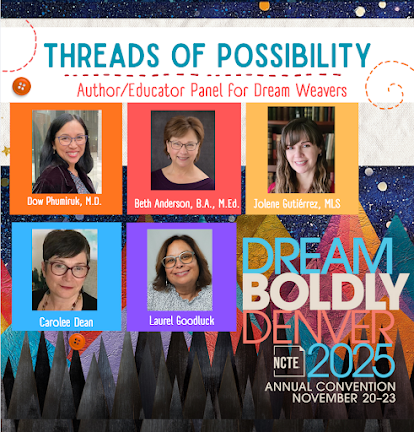
If you are attending the National Council of Teachers of English (NCTE) conference in Denver, check out my author panel entitled "Threads of Possibility." I'm honored to be presenting with Colorado authors Beth Anderson, Jolene Guitaerriez, and Dow Phumirik. Joining us from New Mexico is Laurel Goodluck. I will be sharing a poetry writing activity from my book, Story Frames for Teaching Literacy: Enhancing Student Learning through the Power of Storytelling.
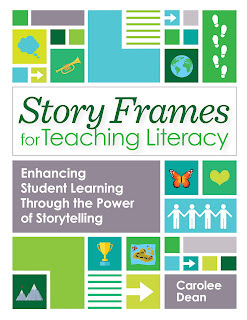
The activity is from Chapter 10: Poetry: Exploring the Power of Language and Story Through Verse. Here are two examples from the book that use poetry to create a mini-book summary.
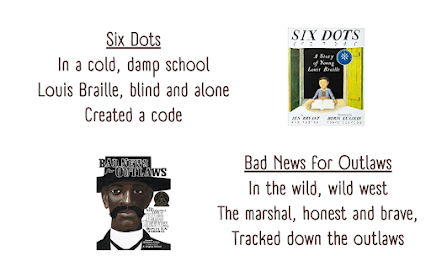
Can you tell what these two poems have in common?
1. They are both based on narrative non-fiction picture books that are biographies.2. They are both haikus with a 5-7-5 syllable structure
But there is more. Each line follows a specific pattern. Use this pattern with your students to create Haiku Book Summaries. The example below is based on Six Dots: A Story of Young Louis Braille
Haiku Book Summary
Line 1: 5-syllable prepositional phraseIn a cold, damp school
Line 2: 7-syllable subject with adjectives out of orderLouis Braille, blind and alone
Line 3: 5-syllable verb phrase/predicateCreated a code
During the presentation, I will also share haiku based on the picture books of the other panelists. Here is one below from Beth Anderson's book, Hiding in Plain Sight: Kate Warne and the Race to Save Abraham Lincoln. This haiku is also a story summary. The book is illustrated by Sally Wern Comport and tells the story of a female detective who helped save President Lincoln from an assassination plot on his way to his inauguration. I always learn an interesting tidbit of history from Beth's books.
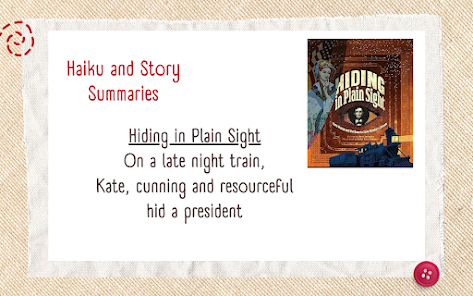
In 2026, the focus of my newsletter will be on sharing stories and activities from Story Frames. Sign up for my newsletter HERE so you don't miss any fun freebies.
November 6, 2025
COR The Components of Reading - Part 6 - Sentence Structure
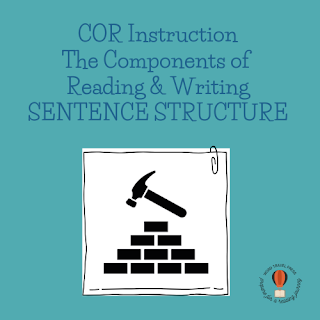 We are continuing our series on COR Instruction by exploring sentence structure. I first used the icons below in my book, Story Frames for Teaching Literacy: Enhancing Student Learning through the Power of Storytelling, to help students build complex sentences through asking a series of WH-Questions. This month, I'm using these same questions for a fun fill-in-the-blank story starter.
We are continuing our series on COR Instruction by exploring sentence structure. I first used the icons below in my book, Story Frames for Teaching Literacy: Enhancing Student Learning through the Power of Storytelling, to help students build complex sentences through asking a series of WH-Questions. This month, I'm using these same questions for a fun fill-in-the-blank story starter.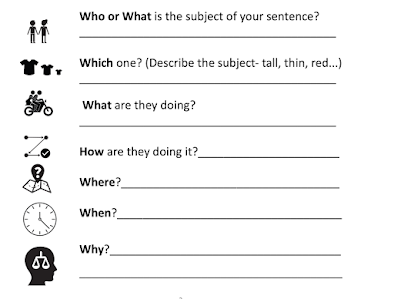
The theme is Scary Stories. I have included a mini word matrix for the base element SPECT (as in specter). There is also a series of questions to help students build a complex sentence. To learn more about using the matrix for Structured Word Inquiry and morphology instruction, see my blog post HERE. Find the downloadable PDF for the Scary Story Starter HERE. It includes the three pages seen below.
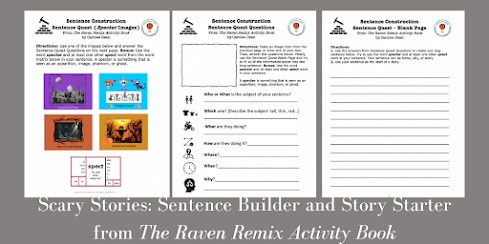 And don't forget to check out The Raven Remix Activity Book. It is based on my decodable chapter book, The Raven Remix: A Mashup of Poe Titles. They may be found on Amazon or at my online STORE. The Activity Book contains 15 different activities for sentence construction.
And don't forget to check out The Raven Remix Activity Book. It is based on my decodable chapter book, The Raven Remix: A Mashup of Poe Titles. They may be found on Amazon or at my online STORE. The Activity Book contains 15 different activities for sentence construction.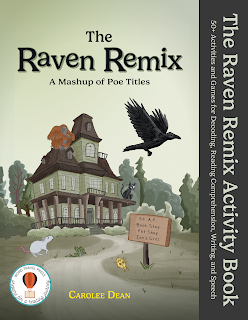
Sign up for my newsletter HERE and receive a free copy of my first decodable book, No Gift for Man. Don't miss any of the fun-filled activities coming up.
October 12, 2025
Who Was the Sea Farer Who Discovered America Before Columbus?
 Replica of the Santa Maria from Deposit Photos
Replica of the Santa Maria from Deposit PhotosYou probably know that on Monday, October 13, 2025 people will celebrate Columbus Day in honor of the seafarer who landed in America, as he took a wrong turn in his quest to find India. Many others will celebrate Indigenous Peoples' Day in honor of the folks who crossed the Bering Land Bridge thousands of years ago. When I lived in New Mexico, we celebrated Indigenous Peoples' Day.
But you may have missed what happened on October 9th. It was Leif Erikson Day. He was the European explorer who came to America around the year 1000, beating Columbus by a few hundred years.
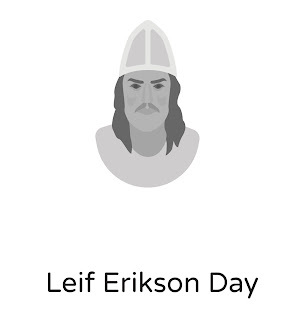
While researching my new book, Cars, Cakes, Codes, and Gutenberg: 20 Decodable Poems About Inventions, coming in 2026, I stumbled upon a little-known story about the Viking ship.
The 1893 Chicago World's Columbian Exposition was a six-month-long World's Fair created to celebrate the 400th anniversary of Columbus's first voyage. But another fair attraction, a quite subversive one, challenged the long-held belief of that time that Columbus was the first European seafarer to reach America.
When Magnus Andersen, a Norwegian ship captain, heard about the Exposition celebrating Columbus, he decided to build a ship and sail it to America to prove that Leif Erikson, a Viking explorer, could have made the journey in the year 1000. According to the sagas of the Norse, Leif Erikson took a journey west around the year 1000 and discovered new lands. The Norse had long argued that Leif Erikson discovered America well before Columbus, and Magnus set out to prove it. He raised the money from the public and hired Christen Christensen to make an exact replica of Erikson's longboat. Christensen used the Gokstad Ship as a model. In 1880, a ship was discovered in the burial ground of a Viking chieftain in Gokstad, Norway. It was determined that the chieftain lived around the time Leif Erikson made his voyage west and that Erikson would have used a similar vessel. They named the new ship "Viking."

Viking Ship Illustration from Deposit Photos
The Viking ship had one upper deck, one mast, and was 76 feet long. Columbus's Santa Maria was between 90-110 feet long with three decks and three masts.
Magnus and eleven other men sailed the Viking from Bergen, Norway, across the Atlantic Ocean, facing sleet, storms, and gales. When they arrived in New York, they travelled up the Hudson River, through the Erie Canal to the Great Lakes. The Viking ship was moored on the shores of Lake Michigan, where many fairgoers visited the vessel. Magnus had proved that Leif Erikson very easily could have been the first European to discover America. He simultaneously made history while rewriting it.
Sign up for my newsletter to receive activities for my ongoing COR (Components of Reading) series HERE and watch for news about Cars, Cakes, Codes, and Gutenberg: 20 Decodable Poems About Inventions coming in 2026.
September 26, 2025
Structured Literacy in the Science Classroom - Part 2 (Morphology)
 Image Courtesy of Pixabay
Image Courtesy of PixabayThe Sharpened Vision of the International Dyslexia Association promotes Structured Literacy in every classroom everywhere and around the world, but how does that apply to subjects like science for the upper grades?
It's challenging to envision a high school chemistry teacher dedicating time to work on decoding or phonics, so how do those educators incorporate Structured Literacy into their curriculum without sacrificing precious instructional time?
One avenue for promoting Structured Literacy and the Science of Reading in every classroom is through the development of morphological awareness.Earlier this month, at the end of my Structured Literacy Symposium on Vocabulary and Background Knowledge for California's Tri-County Branch of IDA, one of the participants shared a personal story from her years of teaching experience.
When she was a middle school general education science teacher, she had little understanding of Structured Literacy. Even so, she was actively incorporating a Structured Literacy approach. When an unfamiliar word appeared in the science lesson, rather than asking students to memorize the textbook definition, she broke down the word into morphological units and initiated a discussion about connecting base elements, prefixes, suffixes, and Greek combining forms to terms already familiar to the class.
By connecting unknown words to known words, she drew on what students already understood about the word. This practice aligns with the strategy of utilizing background knowledge to create student-friendly definitions, as outlined in Bringing Words to Life: Robust Vocabulary Instruction by Beck, McKeown, and Kucan.
In my August BLOG post, I shared their three Tiers of Vocabulary - not to be confused with the Multi-Tiered Systems of Support in the diagram below. Please read that blog post for more information about Tiers of Vocabulary.
Using morphological awareness to teach vocabulary in upper-grade science classes is a logical choice that supports both the curriculum and Structured Literacy. Many scientific terms originate from Greek and Latin. This emphasis also aligns well with a Structured Literacy approach, as illustrated in the Infographic below.
(courtesy of the IDA at https://dyslexiaida.org/infographics/)
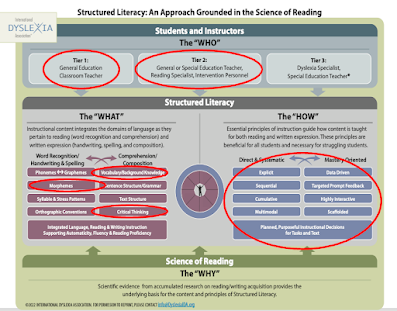
Examining the "Who" section of the infographic, general education classroom teachers can effectively utilize morphology instruction with both average-performing students and those who may require additional support. Specialists, such as reading teachers and speech-language pathologists, can also do a deeper dive into that same vocabulary when they meet with students in small groups or 1:1 for Tier 3 support.
Examining the "What" section of the Infomap, morphological awareness requires critical thinking and fosters growth in both vocabulary and background knowledge.
"How" a teacher approaches the teaching of morphology may incorporate several elements of both direct/systematic and mastery-oriented strategies.
As an example, when teaching a word like subaquatic, which may not be automatically generalizable to other subjects, focus on the morphemes that do appear across subject areas and are related to words the student already understands. These types of conversations are engaging, require students to draw on background experience, and incorporate morphological problem-solving. After introducing the word, introduce the parts.
SUB = UNDER: submarine, subtract, substitute, submit, suburban.
AQUA = WATER: aquarium, Aqua Man
TIC = A suffix that turns a word into an adjective that describes a quality or characteristic: fantastic, aromatic
Then, encourage students to think of other words containing those elements. If they watch crime shows, they may be interested to know that an unsub is an "unknown subject" or an unidentified perpetrator. Although the word "subaquatic" may not transfer easily across topic areas, the word "subject" certainly does.
A visit to etmonline.com reveals that ject means to throw. Sub+ject therefore means to throw under, bind under, or that which lies beneath. That meaning makes sense when thinking about the king's subjects, or how a younger brother might subject his older brother to a barrage of silly jokes. It takes a bit more imagination to consider math as a subject that lies beneath, but in that context, it might make sense to think of the student throwing themself under, or submitting to a course of study.
Once you have a list of "sub" words, make a matrix like the one below, created with Mini Matrix Maker at
www.neil.ramsden.co.uk/spelling/matrix.

 After exploring the Word Sums, students can create sentences or answer questions based on the shades of meaning of the various words.
After exploring the Word Sums, students can create sentences or answer questions based on the shades of meaning of the various words.Last week, I explored the subject of Structured Literacy in the Science Classroom with a look at Haiku and Syllable Structure. Check it out for more ideas on how to use Structured Literacy in the science classroom.
Sign up for my newsletter to receive activities for my ongoing COR (Components of Reading) series HERE.
September 19, 2025
Structured Literacy in the Science Classroom - Part 1 (Haiku and Syllable Structure)

The International Dyslexia Association promotes the concept of "Structured Literacy in Every Classroom," but that can be challenging to address when teaching upper-level science courses to students in general education.
A fun way to incorporate science vocabulary, Structured Literacy, and the Science of Reading is to practice syllabication and phonological awareness using a haiku.
Haiku is a form of poetry originating in Japan that is based on the number of syllables per line. A haiku consists of three lines of poetry with a 5-5 syllable structure. Poems can be on any topic, but themes often revolve around the beauty of nature and the seasons.
snow gently falling (5)
a candle in the window (7)
riding home at night (5)
I was in a middle school library teaching a workshop to students on Haiku when we brainstormed the topic of winter. We made lists of words in five columns related to the number of syllables in each word. Then, students used those words to create haiku poems. A general education science teacher who happened to be walking through the library stopped to watch as the students worked excitedly to create their poems.
"I could do this in my science class using science vocabulary," the science teacher told me.

Haiku is often used with young students to promote writing because it is simple, words are sparse, and it doesn't require rhyme. Additionally, grammar and punctuation are not considerations. The children's author, Laurie Halse Anderson, speaks about her struggles with dyslexia in a Reading Rockets interview and shares how she had her first positive experience with writing when a second-grade teacher introduced her to haiku because she could choose the words she knew how to spell. See my 2020 blog post about Children's Authors with Dyslexia.
In my book, Story Frames for Teaching Literacy: Enhancing Student Learning Through the Power of Storytelling, Chapter 10 is about "Poetry: Exploring the Power of Language and Story Through Verse." In that chapter, I discuss using haiku to create mini book summaries. The one below is based on Six Dots: A Story of Young Louis Braille, written by Jen Bryant and illustrated by Boris Kulikov
In a cold, damp school
Louis Braille, blind and alone,
Created a secret code
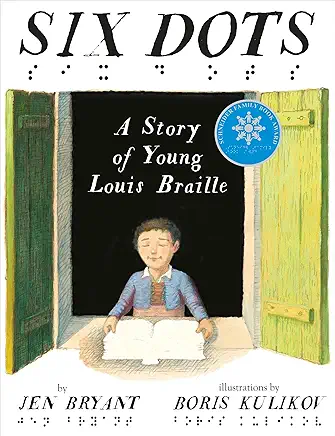
I am currently working on a poem about the invention of glass for an upcoming book for my HOT ROD series (Higher Order Thinking through the Reading of Decodables). The beginning of the poem starts with a haiku:
Sand, soda, and lime
Copper oxide turns it green
Watch the melting time
Here is an adaptation of my haiku writing process, which can be used for any grade level with any subject:
A. Research a Topic: I started with the Roman Era of Glass.
B. Take Notes: I focused on the process of making glass and how silica (sand), soda, and lime were the key ingredients, with various oxides used to change the color of the final product. I also listed the different types of vessels made from glass (jars, lamps, cups, plates, flasks) and the most popular images used to decorate the glass (pigs, fish, sandals, and so forth).
C. Make a list of keywords and terms: From my notes, I compiled a list of words I thought would fit best into a poem.
D. Create a Syllable Chart: Next, I put words and phrases into categories based on the number of syllables.
1 - pig, fish, mug, plate, vase
2 - garlands, inflate, Roman
3 - Medusa, manganese, drinking cups
4 - copper oxide, floral patterns
5 - bottles in bird shapes, bake it in a kiln
E. Make a list of phrases: I added more 5-syllable phrases to the list above and then used words from the rest of the list to create 7-syllable phrases: use a bit of manganese, there's Medusa on a flask.
F: Organize the lines: Next, I arranged and rearranged the lines to come up with a 5-7-5 structure.
F. Play with the pattern: Along the way, I played with the number of syllables if I came across a line that didn't quite fit. This process of adding or taking out words is a wonderful activity for practicing phonological awareness. Students must repeatedly think of phrases, count the syllables, analyze the number, and make adjustments. I had to follow that process when trying to come up with a 7 syllable line about manganese:
For purple, you need manganese (8) Manganese will give you purple (8) For purple, add manganese (7). I finally settled on the last two lines below, both with 7 syllables, which I added to the haiku shown earlier to make a tanka, a form of poetry with the syllable structure 5-7-5-7-7.
Sand, soda, and lime (5)
Copper oxide turns it green (7)
Watch the melting time (5)
Use a bit of manganese (7)
for purple perfume bottles (7)

Because this poem is part of a decodable book that includes only sound a syllable patterns previously taught, there were many key terms I had to avoid because they involved vowel teams - blow, blue lead, beads - or c pronounced as /s/ or /sh/ in circus, century, bracelet, ancient. I also avoided words with silent letters like design. Consequently, another step for me was to find synonyms for words that did not fit the Scope and Sequence - pattern for design and inflate for blow.
Students working at Level 4 of the HOT ROD series have learned closed syllables (fish, pig, mug), open syllables (Roman, spiral), Silent e (plate, vase), and R-controlled syllables (garland, copper). Find the Scope and Sequence of the series HERE and watch this blog for more news about my new poetry book.
Sign up for my newsletter to receive more free activities for my ongoing COR series HERE. Stay tuned for news about the release date for Cars, Codes, Balloons, and Guterburg: Poems about Inventions.
August 30, 2025
COR - The Components of Reading - Part 5 - Vocabulary (Continued)
VOCABULARY & WORD KNOWLEDGE - CONTINUED
BECOME A WORD COLLECTOR
Start the school year by inspiring your students to become Word Collectors. The focus of this month's newsletter is on building a love for words in our classrooms, therapy settings, and homes. Perfect for all ages, I suggest sharing The Word Collector, written and illustrated by Peter H. Reynolds (2018) See the YouTube Video of the Obama’s reading this book aloud HERE.
Jerome loved collecting all sorts of words: words he saw, heard, and read. He collected multisyllable words "that sounded like songs" and words he simply enjoyed saying. But one day, he had an accident, and his carefully categorized scrapbooks of words became a jumbled mess. That's when he started putting words together in new and unique ways, creating poems and songs. In the end, Jerome got his greatest joy from sharing those words with others.
In the book Bringing Words to Life: Robust Vocabulary Instruction, the authors, Beck, McKeown, and Kucan discuss many vocabulary routines based on the Science of Reading. You may recall that Beck and McKeown were among the first to promote the idea of focusing on Tier Two words for vocabulary instruction. Here's a brief recap:
Tier One - (milk, cat, mom) Everyday words that students typically learn from oral language encounters. These words typically do not need to be taught in school because children often learn them at home.
Tier Two - (conclude, evidence, interpret) These words span multiple domains and topic areas. They are found across a wide range of subjects. Focusing instruction on these words impacts both reading and writing because the terms occur frequently across various domains.
Tier Three - (photosynthesis, denominator, legislature) These words are specific to specialized topics. Because they occur in lower frequencies than Tier One and Two words, they should be taught as needed, as they arise in context.
The authors provide specific details and strategies for teaching Tier Two words, always beginning with a story or informational text to establish context. They also discuss the importance of developing a culture in the classroom that celebrates words of all kinds. They suggest incorporating a component they call Word Wizard that extends beyond the classroom. In a research study, they found increased vocabulary learning when students participated in the program.
The researchers gave students leaflets describing the different levels of the Word Wizard program: Word Watcher, Word Worker, Word Winner, Word Wizard etc.A Word Wizard Chart was set up to tally points for students' telling about experiences hearing, seeing, or using target vocabulary words outside of class.Students were able to use the points to earn extra credit and participate in special events.Points were tallied on an ongoing basis, and students received a certificate based on the level they had achieved. When I was in private practice as a dyslexia therapist, I sent two to three words home with students per week that we had come across in our reading, with a note encouraging parents to display the words on the refrigerator and get everyone in the family involved in using the words as many times as possible throughout the week. Because we focused on stories about real people and events, my students became quite excited whenever they were able to share background knowledge in the classroom about a topic we had covered.At some point, most students struggle with words. A Walk in the Words written and illustrated by Hudson Talbott (2021) is a Schneider Family Honor Winner. This award is presented to books that effectively portray the experience of living with a disability.
When the author/illustrator was a boy, he loved drawing, but reading was hard for him. He could handle one word at a time, but too many of them caused trouble. He felt alone and lost, kind of like being lost in the woods. But then he learned that many smart and famous people were slow readers, too. Now Hudson Talbott is a successful writer as well as a talented illustrator.
Words have power, and when we get excited about learning new words, our students share in that enthusiasm.
To find last month's free activities from VOCABULARY (Part 1), visit my July Blog Post.
Sign up for my newsletter to receive more free activities for my ongoing COR series HERE.
July 25, 2025
COR - The Components of Reading - Part 5 - Vocabulary
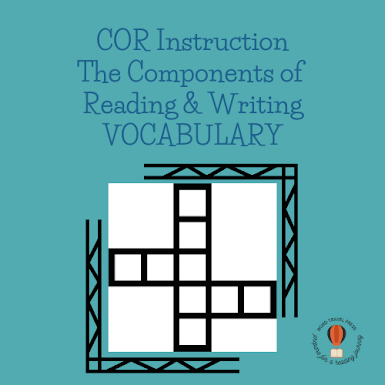
VOCABULARY
Continuing our series on COR Instruction, where we highlight the activities explored in the HOT ROD activity books (Higher Order Thinking through the Reading of Decodables), this month’s topic is Vocabulary. For more information about decodable books, visit the page on our website titled "Decodable Books."
Sign up for my newsletter to receive more free activities for my ongoing COR series HERE.
One of the main features of HOT ROD books is their focus on providing decoding practice within a meaningful context, utilizing key vocabulary that can be used to address a variety of COR skills.
Vocabulary is a foundational building block of both listening and reading comprehension, but it can be challenging to include robust vocabulary in a Structured Literacy lesson when focusing on the limited syllable constructs often found in decodable books and stories. On the other hand, even the most basic word forms can provide opportunities for exploring advanced vocabulary, especially when multi-syllable words are included. Consider these words based on closed syllables with short vowel sounds from Gods and Gifts: Three Greek Myths Retold - asp, vast, crag, smelt, crept, pox, kestrel, linnet, prospect, gallant, Vulcan, scandal, rascal, tempest, vespid.
When vocabulary is based on rich content, comes from material related to the curriculum, is used for additional activities that address skills like cognitive flexibility, morphological awareness, sentence structure, and more... repeated exposure to words happens naturally.
We know it is beneficial to pre-teach new words before students are asked to read them in context. However, it is also vitally important to teach students strategies for determining the meaning of new words independently. Students with reading challenges require even more exposure to a word than their peers, so even if they have already been introduced to a definition, it is still beneficial to explore it in context. Context is especially significant for understanding words with multiple meanings. Consider these multiple-meaning words from Gods and Gifts: bat, drill, hog, rat, pelt, land, last, spit, bluff, band, top, spin, class, jam, craft.
Multiple Meaning Word Search
To promote both vocabulary and reading fluency, instruct students to:
1) Reread a story and create a list of any words that may have multiple meanings.
2) Write down all the possible meanings of the word.
3) Reread the context to determine which meaning fits that word as it is used within the story.
Rereading helps students develop confidence and fluency, but there needs to be a meaningful reason for rereading, or it feels like busy work. Tying rereading into vocabulary instruction gives students a purpose for tackling a text more than once.
Word Clues
Searching for the meaning of a word within the context of the story is a bit like being a word detective. It's helpful to teach students the specific ways a text can reveal the meaning of a word. The Hank the Tank Activity Book (based on the decodable chapter book - Hank the Tank: Animal in the Spotlight) contains three levels of activities to help students develop the skills needed to use context clues to determine the meaning of a word. The activity for Level 1 is available in a PDF below
Level 1 – Seek and Find: Sometimes the meaning of a new word is given within the context of a nearby sentence. Authors of children's books frequently provide definitions directly within the text. In the activity below, students underline the provided definition. Get the FREE PDF for this activity.
When reading books with your students, be aware of examples of "planted" definitions and direct your students to reread a sentence or paragraph to see if they can find it. Practice this skill often so they will know how to use it during independent reading.
The following activities are taken from the background section of the story and are not decodable, so you may need to read the sentences aloud to students. One of the strengths of HOT ROD books is a strategy called Pair and Share Reading. The adult reads the sections that are not decodable to provide background and context, while the student reads decodable sections containing words with syllable structures that have been previously taught. Using this strategy, upper-level Tier 3 vocabulary can easily be introduced to students with low levels of decoding skills. Here is an example incorporating the word hyperphagia.
Late summer is when bears go into hyperphagia in Tahoe. They binge eat everything they can find to build up fat reserves. Sometimes they double their body weight.
Word and Definition: Hyperphagia is when bears binge eat everything they can find to build up fat reserves.
Level 2 – Making Inferences: Sometimes hints about a word’s meaning are given, but the meaning is not stated outright. For this activity, students are asked to write down what they think the word means based on the clues. Look for opportunities in the stories you read with your students to demonstrate how to make inferences about word meanings.
Here's an example from the Hank the Tank Activity Book, using the word' canids. In this example, hints about the definition are provided. From the information given, depending on the extent of their background knowledge, a student might be able to deduce that canids are animals in the dog family.
Bears have developed a fear of canids. A barking, snarling dog looks just as dangerous to a mother bear as a wolf or coyote.
Word and Definition: A canid is an animal like a wolf or coyote. These are animals in the dog family.
Level 3 – Opposite Meanings: Sometimes the context tells us the opposite of what a word means. Look for negative words like no, don’t, instead, unfortunately, or any other words that have prefixes like un. as a clue that the information may be hinting at an opposite meaning. Then write down what you think the word really means.
Here's an example from the Hank the Tank Activity Book using the word instincts.
When a bear loses its instincts, it has unnatural impulses to do things like eat garbage.
Word and Definition: If losing instincts results in unnatural impulses, we can deduce that instincts are natural impulses.
Independent Learning
Students typically learn around 2,000 to 3,500 new words per year, about 6 to 10 new words per day. This includes both explicit vocabulary instruction and implicit or incidental learning from reading and other experiences.
By teaching strategies for determining the meaning of new words independently, we empower students to improve their ability to learn words incidentally and become lifelong learners, continually adding new words to their lexicon. This is vital, as we cannot possibly teach all the words students need to meet the demands of an ever-changing world.
See last month's post or COR Instruction and Morphology.
Sign up for my newsletter to receive more free activities for my ongoing COR series HERE.
References:
Wright, T.S., & Neuman, S.B. (2015). The power of content-rich vocabulary instruction. Perspectives on Language and Literacy, 41 (3), 25-28.
Shanahan, T. (2015). Are you lactating? On the importance of academic language. Perspectives on Language and Literacy, 41(3), 14-16.
June 28, 2025
COR - The Components of Reading - Part 4 - Morphology
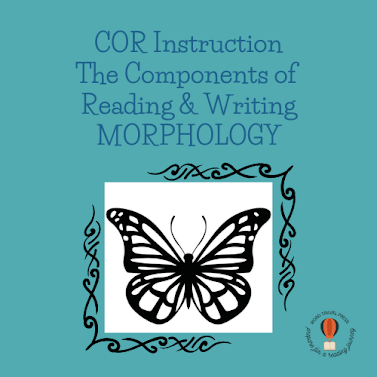
MORPHOLOGY
Continuing our series on COR Instruction, where we highlight the activities explored in the HOT ROD activity books (Higher Order Thinking through the Reading of Decodables), this month’s topic is Morphology.
One of the main features of HOT ROD books is a focus on providing decoding practice within a meaningful context, utilizing key vocabulary and other concepts that can also be used to address COR skills like morphological awareness.
While phonemes represent the smallest units of sound, morphemes represent the smallest units of meaning. English is a morphophonemic language, which means that the phonemes and the morphological structure work together to affect how words are pronounced.
In her chapter on “Morphology for Reading, Spelling, and Vocabulary,” in Speech to Print: Language Essentials for Teachers (Third Edition), Louisa Moats talks about the power of morphological awareness for building vocabulary. The ability to recognize morphemes enhances a student's ability to make reasonable inferences about a word's meaning in context. That recognition and understanding help to “anchor a word in memory.” In addition, we remember words best when we understand their relationship to other words.
It's never too early to start teaching morphology. Children as young as kindergarten benefit from learning basic suffixes such as -s, -ed, and -ing. Many older students working on a Scope and Sequence that starts with closed syllables (short vowel sounds) can handle word sums like the one below from the Gods and Gifts Activity Book: 50+ Activities and Games for Decoding, Reading Comprehension, Writing, and Speech. The word matrix examples in this blog were all created using the Mini-Matrix Maker at www.neilramsden.co.uk/spelling/matrix.
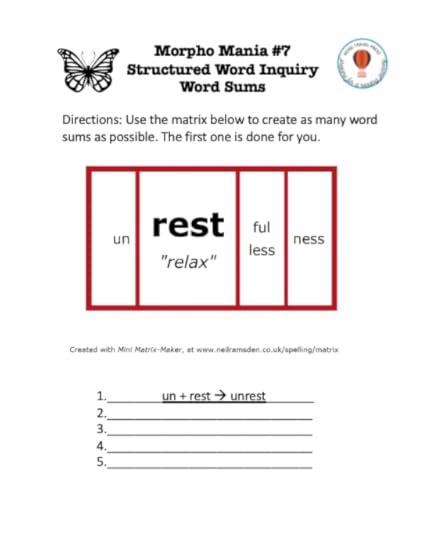
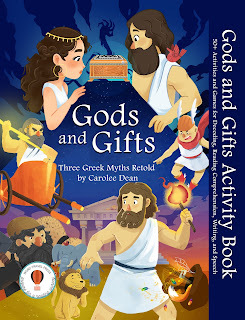
About the Word Matrix
The Word Matrix is a concept explored by Peter Bowers in Teaching How the Written Word Works: Using Morphological Problem-Solving to Develop Students’ Language Skills & Engagement with the Written Word. This is how word sums work:
1. A Word Matrix helps us explore word structure by organizing elements like prefixes, base elements, and suffixes into columns.
2. Prefixes are in the left column. Base elements are in the middle column. Suffixes are in the right columns.
3. A Word Sum is created by using one element from one column at a time to construct a word. You do not have to use an element from every column, but do not skip over columns.
4. Students create words using the Word Sums and then use those words to complete a variety of activities.
In the example above from the Gods and Gifts Activity Book, students work with basic syllable types. Etymology is also an important part of the Morphological Problem-Solving process. For that reason, the activity book also explores the etymology of Prometheus, Epimetheus, & Pandora, main characters in the Greek Creation Myth. More advanced students (those working beyond closed syllable types) study the origin of these names and the meanings of those Greek combining forms. Students who are not ready to tackle reading those words still benefit from the discussion of those names. One of the strategies that makes the HOT ROD books unique is the emphasis on Pair and Share reading. A rich background context is read by a reading partner, allowing struggling readers to build world knowledge even as they learn basic decoding skills.

The example for SPECT above is from Level 3 and The Raven Remix Activity Book, which also explores the etymology of Pluto, the name of Edgar Allan Poe's infamous feline from his short story "The Black Cat."
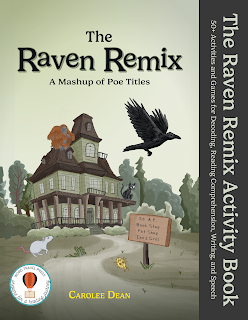
The Hank the Tank Activity Book includes morphology games and activities for re, tract, and -ing, as well as information about the etymology of the word bear, but it does not include any Word Sums. For that reason, I have made a digital activity available for free on Boom TM Cards HERE, exploring word sums for TRACT.
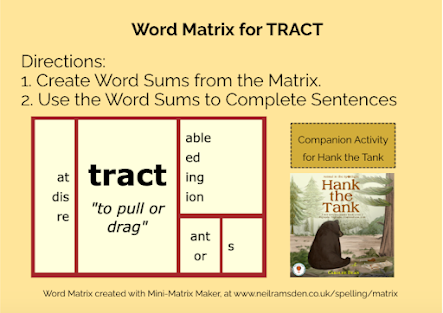
Sign up for my newsletter to receive more free activities for my ongoing COR series HERE.
References:
Bowers, P. (2009). Teaching how the written word works: Using morphological problem-solving to develop students’ language skills & engagement with the written word. Ontario, Canada: Peter Bowers
Eggleston, R. L., Marks, R. A., Sun, X., Yu, L., Zhang, K., Nickerson, N., Hu, X., Caruso, V., & Kovelman, I. (2024). Lexical morphology as a source of risk and resilience for learning to read with dyslexia: An fNIRS investigation. Journal of Speech, Language, and Hearing Research. https://doi.org/23814764000300140072
Farrell, L.M., & Cushen-Whte, N. (2018). Structured literacy instruction. In J.R. Birsh & S. Carreker (Eds.) Multisensory teaching of basic language skills (4th ed., pp. 35-72). Baltimore, MD: Paul H. Brookes Publishing Co.
Moats, L.C. (2020). Speech to print: Language Essentials for Teachers. Baltimore, MD: Paul H. Brookes Publishing Co.
Ramsden, N. Mini-Matrix Maker -https://www.neilramsden.co.uk/spelling/matrix/


